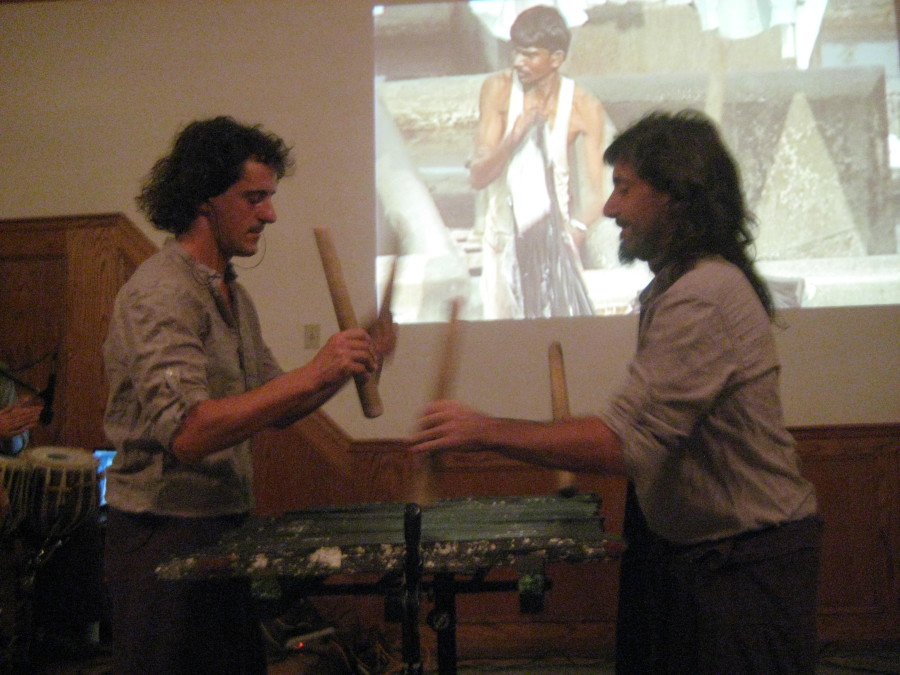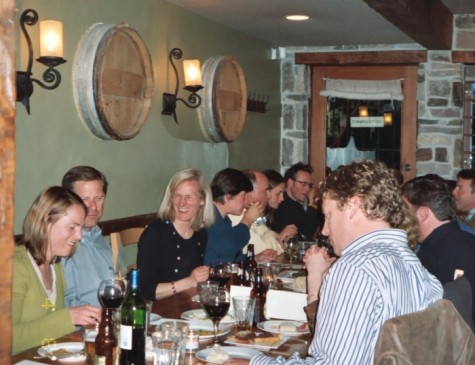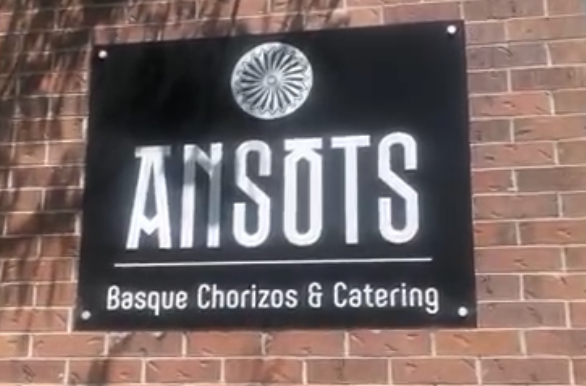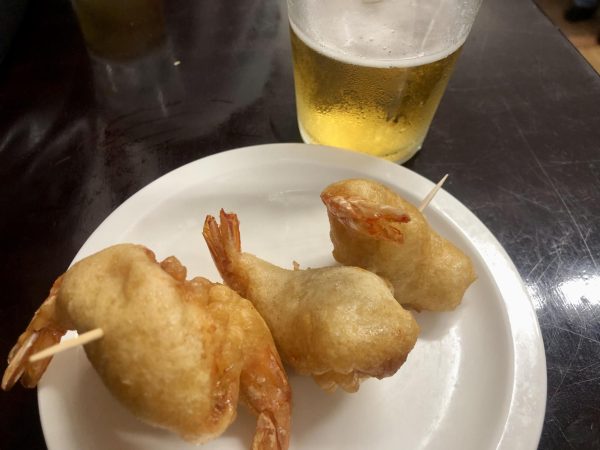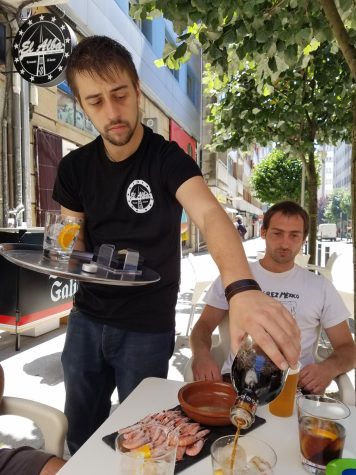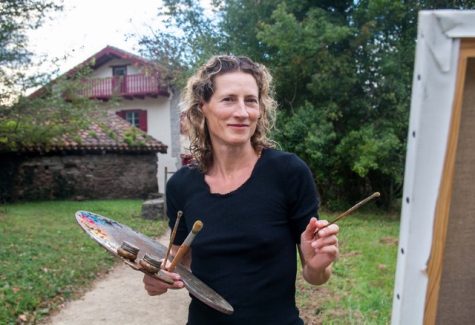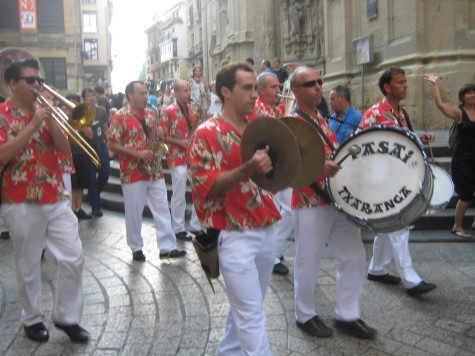Nomadic Txalaparta Players from the Basque Country Tour the U.S.
October 4, 2010
The Basque Country duo of Harkaitz Martinez de San Vicente and Mikel Ugarte have focused the spotlight on the unique instrument known as txalaparta here. The txalaparta players just finished a tour of the United States, performing 10 concerts in two weeks.
They are presenting an unusual video-music concert, playing the txalaparta while projecting on a screen a documentary they made, “Nomadak tx,” about their travels around the world in 2006. The musicians went to India, Lapland, the Sahara and Mongolia, interacting with native people, who in most cases had never seen a txalaparta before. They even built new txalapartas from whatever they found, creating a stone txalaparta in India, and making another out of ice, using a chainsaw, in Lapland.
“The reaction of the people was different in each place,” said Martinez de San Vicente. “For example, in Mongolia, they laughed a lot. They laughed about everything.”
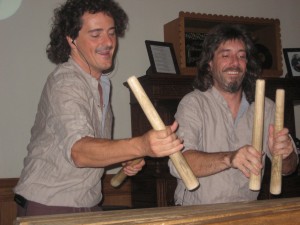
The txalaparta is made up of boards, which the two musicians hit with carved sticks.
It is perhaps the only instrument in the world that requires two people to play it. As such, this duo consider it a symbol for the interaction between peoples and cultures
“The music which rises from the txalaparta is born of the encounter between two people: one sets the basic rhythm, known as ttakun in Basque, and the other one breaks it, creating sounds in the space with the first leaves free – herrena,” they explain on their website, Nomadaktx.com.
When the documentary first came out in 2006, they hit the film-festival circuit, invited to show it at over 100 festivals, including several in the U.S. More recently they incorporated live music into the presentation.
Carrying their equipment on and off planes has been the most interesting and the most arduous part of their U.S. tour. More than one member of the group commented, laughing, on their run-ins with customs officials and airport security workers, when they opened their luggage, only to find sticks of wood or pieces of stone. Because of weight restrictions, they even had to leave entire notes behind, joked Martinez de San Vicente. “Normally we work with 17 piedras (stones),” but they only brought eight for the U.S. tour.
Actually, the group consists of three txalapartari, and they rotate among the three of them for different tours. The third player, Igor Otxoa, remained in the Basque Country during the U.S. tour. They performed with percussionist Iñigo Egia, and guitarist Mixel Ducau, a musician who also plays with other groups.
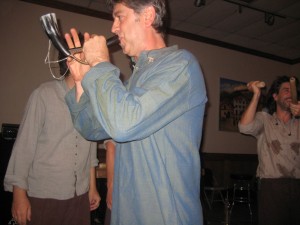
The group performed in Indianapolis, Washington D.C., Minneapolis, San Francisco, Los Angeles, Albuquerque, Santa Fe and Chicago. They played for the Basque community at the Basque Cultural Center in San Francisco and the Chino Basque Club. In most cases, they performed in a darkened theater, on a stage. The concert at the Chino club didn’t have the ideal conditions, but was more intimate, noted Martinez de San Vicente.
While pleased to expose their instrument in so many places, they also lamented the brevity of their trip, which didn’t allow them to enjoy much of the locations they visited. They had to be back for a concert in France on Oct. 2.
They are considering another trip to the U.S. in March, but they also have plans to play in the Middle East, Japan and Europe.
The group ‘s website: Nomadak tx

